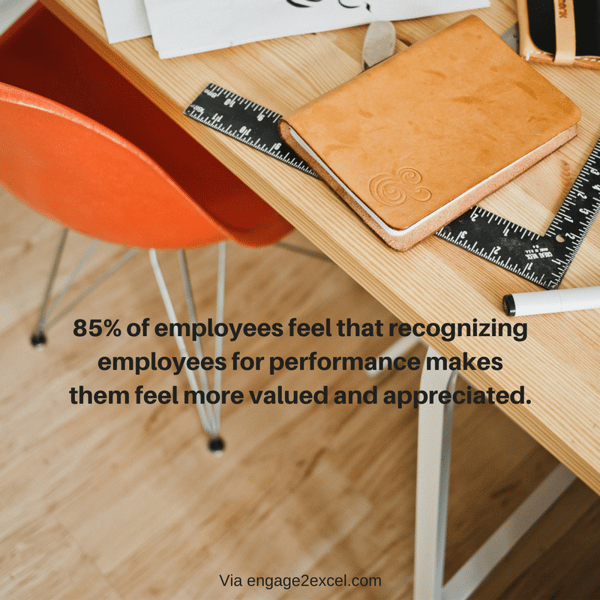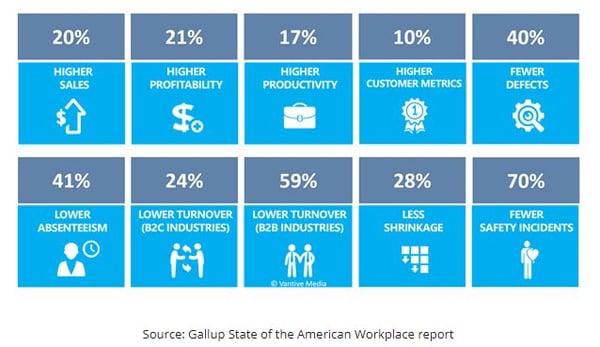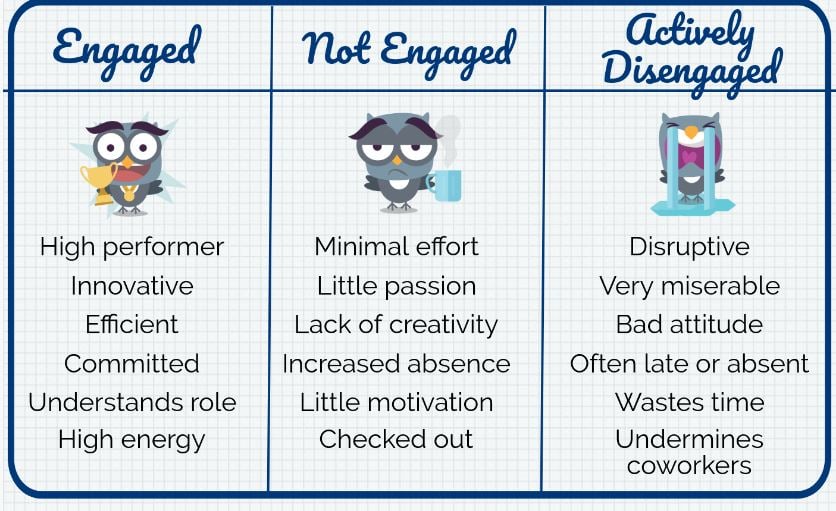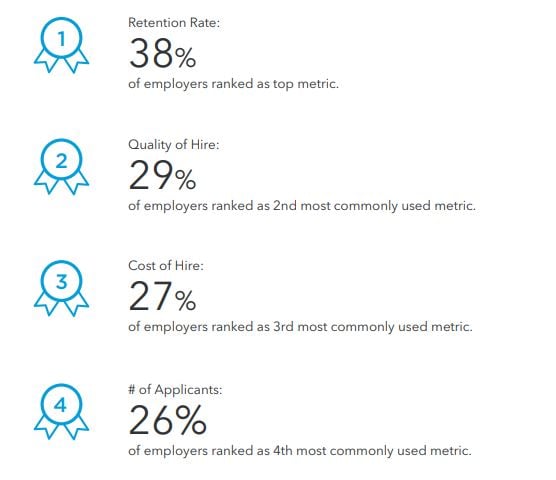Estimated Read Time: 20 Minutes

Your branding defines who you are – it states your mission, your name, your unique image, and who you are through all of your touchpoints. Branding also is to establish a consistent theme, voice, and standard throughout the company and various channels. However, at the end of the day, company branding is to establish a significant and differentiated presence in the market that attracts and retains loyal customers and employees.
It doesn’t matter if you are a Fortune 500 company or a small business. Nor does it matter the industry you are in - branding is vital for your business. You may be a B2B focusing on excellent customer service and cost-effective products or you may be a B2C that specializes in a quality product and upscale atmosphere; however, no matter the mission statement, your branding sets the stage for people’s expectations.
Your brand is how the public, your clients, and even your employees, perceive your business. So, your business’ branding should never be neglected.
Lack of Business Branding Alignment
There is often fluff and uncertainty around business branding. Unfortunately, that is especially true for most businesses themselves. The message gets lost and is frequently is unknown by employees. Hence, there is often a misalignment between your employees and your company’s branding.
Keep in mind that your brand is your promise – it defines your culture, sales, marketing, customer service, and even product strategy.
When there is a lack of alignment in branding in your company, you will not only lose clients (and money) but your company will be adrift in a confused state, internally and externally.
According to Lucidpress, “the greatest negative impact of inconsistent brand usage is the creation of confusion in the market.”
If people do not know who you are, why would they buy from you?
Why else do you think brands like Marriott, Apple, Nike, HubSpot, Google, Lucas Oil, and Chevrolet are such big brands with passionate brand advocates – inside and outside of the company? They have a consistent and aligned business brand that has seeped into every nook and cranny of their companies.
That’s the importance of aligning company culture and branding.
How Company Culture Impacts a Brand

Company branding is affected heavily by the company’s culture.
As mentioned in this article by Marketing Insider Group.
Your brand is an entity without a face. It’s a thing. It has no family. It’s never struggled. It hasn’t accomplished anything. So, how much, really, can you expect consumers to trust it? But when your employees are themselves the face of your brand, you’re giving your audience someone to believe in…
…If customer loyalty isn’t on your marketing priority short list, it should be. New customers are expensive to convert while your existing customers are likely to bring in more revenue. You may have heard of the stat – or experienced the difference in your marketing ROI firsthand when you focus on loyalty and retention – it costs 5 to 7 times more to acquire a new customer than it does to motivate action from a current customer. And what’s the number one way to encourage customer loyalty? It’s cultivating satisfied and engaged customers. Companies with engaged employees outperform those without as much as 202 percent.
Do you understand? Company culture and branding are interconnected and vitally important for a business.
How important?
- B2B marketers have consistently cited brand awareness as their top goal over the last 5 years.
- 77% of B2B marketing leaders say branding is critical to growth.
- 89% of B2B marketers say that brand awareness is the most important goal followed by sales and lead generation.
- 86% of HR professionals agree that recruitment is becoming more like marketing.
- 72% of recruiting leaders worldwide agreed that employer brand has a significant impact on hiring.
- 39% of respondents say employer brand will be a long-lasting trend to focus on in the future.
- 55% of recruiting leaders worldwide are investing more in employer brand.
The Impact of Business Branding

Since I’m a numbers person, I compiled some statistics and information to help you see how far-reaching and impactful business branding and company culture can be for your business, including profitability, customer retention, and especially your employees.
Successful branding yields benefits such as increased customer loyalty, improved image, and a relatable identity.
But do you want hear the scary part? Only six out of ten marketers think their company brand is well aligned with the strategic direction of their organization. Keep in mind that that could mean your business and/or your competitors.
Now, there are plenty of statistics that I can give on how branding impacts hiring and other HR aspects, but I will leave that for another blog. Instead, I’m going to focus this blog on the various impacts of a company’s brand – the negative and positive.
I’ve sorted these stats into more “chewable” categories since, as you will see; your company’s branding alignment impacts multiple facets of your business.
The Impact of Poor Company Branding
Here are some general facts about how poor branding impacts your business:
- 42% of consumers say that they distrust brands. – via Zimmer Radio & Marketing Group
Many customers are skeptical of what brands offer, often due to poor customer service, not delivering on expectations, faulty products, or other inconsistent messaging or communication. The more your brand is out of alignment and is inconsistent, the less you will be trusted or valued.
- 50% of consumers feel like most brand communication is irrelevant. – via Zimmer Radio & Marketing GroupBusiness objectives, company culture, and company branding must all be aligned. Furthermore, all branding communications need to be relevant, concise, informative, and properly aligned.
Consumers can feel and sense when your company branding is not aligned. Your communication, messaging, goals, and image are overall not the same. It doesn’t matter if it’s the marketing, customer service, HR, production, or C-Suite – if your brand is not consistent, it will show.
What about communication inside the company?
.png?width=600&name=9%20(2).png)
Think about it –what if HR, the department that is typically in charge of employee relationship management, communication, engagement, and internal brand loyalty, rarely communicates? How are employees supposed to feel engaged, or understand the company’s anything, if no one communicates with them, they get so little feedback, and they overall feel disengaged with the company?
- 60% of respondents reported that it was difficult, very difficult, or nearly impossible to obtain information vital to their job from their colleagues. – via hrdailyadvisor.com
Employees in this survey spend an average of 5 hours per week waiting to get in touch with people who have the unique knowledge they need. For 1 in 10 workers, it’s not unusual to wait twice that long. During that time, work may be delayed, suspended, or even canceled altogether, further fueling employee frustrations. When the company’s branding and culture are not focused on collaboration or communication, there is a loss of efficiency, time, and money.
- A firm with 1,000 employees can expect to lose $2.4 million in productivity annually due to day-to-day inefficiencies, and a firm with 30,000 employees might expect to lose $72 million annually. – via hrdailyadvisor.comDay-to-day accessibility is just as important. When a fellow employee cannot be immediately accessed when needed, whether due to a meetings all day, working off-site, working with a customer, or located in a completely different area or country, if the knowledge cannot be immediately accessed and takes a day to two to share, work stalls and productivity is wasted.
- More than half of office professionals want more frequent check-ins with their supervisor. – via tlnt.comThis is due to wanting feedback, engagement, open lines of communication, getting information for a project(s), craving recognition (will get into that more later), and understanding where to improve. Supervisors that cannot be accessed or have closed-door communication will only hinder employees, leading to poor company culture, employee engagement, branding, and productivity.
- Nearly half of employees don’t feel comfortable raising issues or concerns with their manager between performance reviews and almost 75% say they would be more proactive in doing so if they received more frequent feedback. – via tlnt.comFeedback. Communication. Do you see where this is going?
- 90% of employees want their manager to address performance mistakes and development opportunities in real time, yet 68% of executives say they learn about issues for the first time during an annual performance review. – via tlnt.comWhich do you think would be more useful to an employee: addressing a mistake within a day or a week of the mistake or a half-of-a-year or a year later? The employee might not even remember the mistake a month later.
.png?width=600&name=15%20(2).png)
Seems like there is a trend here – more communication, engagement, and involvement. Creating a culture where there is collaboration, open communication, and feedback is what employees (and your company and brand) are craving.
I mentioned that company culture impacts employee engagement and profitability, right?
- Fewer than 12% of companies believe they truly understand their culture. – via Deloitte University Press
- A staggering 57% of employees wouldn’t recommend their organization as a good place to work. -via hrdailyadvisor.com
- Disengaged employee cost organizations between $450 and $550 billion annually. – via SocialCast
- Unnervingly, nearly two-thirds (61%) of employees don’t know what their company mission statement is. – via Achievers.com
If employees don’t even know their company’s branding and don’t feel engaged or valued, how are they supposed to properly represent your business?
Speaking of recognition…
- Employees feel frustrated at a lack of recognition in the workplace, with 57% feeling that they’re not recognized for their progress. – via achievers.com
And, does your company know that they tend to give big workloads and overwork employees?
- 57% of highly stressed employees are disengaged. – via achievers.comVersus, only 10% of employees who report less stress are disengaged.
- Too much work decreases productivity by 68%. – via achievers.comWhen there is an overwhelming amount, completing the work starts to feel like an impossible task for employees.
When employees feel overwhelmed or disengaged, they are less likely to put extra effort in (for you or customers), as well as “work hard.” Refer to how much disengaged employees cost organizations annually above if not convinced.
So, what happens when an employee has had enough? They leave.
- Bad managers are driving employees to leave, with 50% of people having left a job to get away from their boss. – via achievers.com
Think back to when you had a bad boss. What were some characteristics? Did that boss overwork you? Did that boss never recognize you for your hard work? Did that boss treat you poorly? All are factors in a company culture – a good company culture tends to develop good bosses.
- 81% of employees would consider leaving their current role for the right offer. – via achievers.comA job for life has become a thing of the past. You have to develop a connection in order for people to stay. So, if your company has poor branding, communication, engagement, culture, and recognition, how long do you think someone will stay?
Plus, once someone leaves, the hole they leave is pretty large.
- On average, 42% of the skills and expertise required to capably perform in a given position will be known only by the person currently in that position. In other words, should a person leave, their remaining colleagues won’t be able to do 42% of their work, and someone hired into that role will need to learn 42% of it from scratch. – via hrdailyadvisor.comWhether a company’s employee turnover is above or below average, your workforce becomes at least temporarily less efficient every time someone leaves.
- The average US enterprise-size business may be wasting $4.5 million in productivity annually just due to failing to preserve and share knowledge and, thereby, making a new hire onboarding inefficient. – via hrdailyadvisor.comKnowledge is permanently lost when people leave an organization, taking their institutional knowledge with them. If that expertise is not preserved and shared for the remaining employees to reference, rebuilding will be inefficient and lost. An overall frustrating process for everyone involved.
- When a staff member leaves, it can cost 33% of their salary to replace them. – via achievers.comHiring recruiters is expensive, but even if you are looking independently, you will still waste valuable time and money on promoting the position, screening, and interviewing candidates. That’s not even including all of the training.
Talk about loss of time, productivity, and efficiency.
Poor company branding and culture takes a toll on your employees, your prospective clients, current customers, and your business.
These are certainly some of the negatives (there are plenty more stats out there if you want to look for them) that show the impact of poor branding on your business.
So, what about if your business’ branding and company culture are positively and properly aligned?
The Impact of Positive Company Branding:
Here are some general positives to get started.

Higher profitability? That’s a goal for all businesses, right?
- Brands that are consistently presented are 3 to 4 times more likely to experience brand visibility. – via LucidpressRemember that the marketers said that branding was high on their priority list? This is one reason why.
- The average revenue increase attributed in always presenting the brand consistently is 23%. - via LucidpressAn increase in revenue when a brand is consistently presented is certainly a positive reason for good employee culture and branding.
- 64% of consumers say that shared values are the main reason that they have a trusted relationship with a brand. – via Zimmer Radio & Marketing GroupYour brand represents more than your products and services, it’s your company’s message, image, and values.
- 65% of people feel an emotional connection to a brand. – via Zimmer Radio & Marketing Group“They care about people like me,” that’s what loyal customers think, which should always be a goal. Brands that have formed a long-term bond with their customer go beyond the transactions. Those brands care about their customer’s problems and situations, and engage them, are always willing to assist, and solve problems.
What about company culture?
- 82% of respondents believe that culture is a potential competitive advantage. –via Bersin by Deloitte
For hiring, customer engagement, and employee and talent retention - look at Zappos and you’ll understand.
- 76% of employees in North America listed having a positive company culture as a main factor for staying with a company. –via achievers.com
Keep the talent that you’ve worked so hard to train and cultivate – especially that rare talent which has become an integral part of your company.
- 28% reduction in the organization’s turnover. – via LinkedIn
Turnover is expensive – lowering turnover will save you money and talent.
What about employee recognition? Yes, that’s an important factor of company culture. Here are the stats for having a positive employee recognition program(s).
- 70% of employees say that they’d work harder if they felt their efforts were better appreciated. –achievers.comThe lack of recognition kills motivation for employees, but when recognition is applied, employees work harder.
- Productivity increases by 20-25% when employees are engaged. – via achievers.comNot only retain your top talent but encourage them to be more productive and proficient.

When employees feel valued, they are more likely to stay at your business and work hard.
- Companies with recognition programs that are highly effective at improving employee engagement have 31% lover voluntary turnover. – via TinyPulse
Having company culture retains talent, but recognizing your hard workers increases that statistic even more.
- 50% of employees believe being thanked by managers not only improved their relationship but also built trust with their higher-ups – via TinyPulseRemember that stat about how employees want more communication with their supervisors? Now how to you think employees would feel if they were thanked, too?
- Employees with performance recognition programs are 2x’s more likely to recommend their organization as a great place to work. – via O.C. TannerConsidering Word of Mouth marketing is one of the best and highest ROI marketing there is, employees are your best brand ambassadors for customers and recruiting talent.
- 89% of employees believe that employee engagement increases when employees are recognized for performance. – via AccessPerksRemember that disengaged employees cost organizations quite a bit of money? Resolve that issue by engaging and recognizing employees.
- 87% of employees are more committed to stay with an organization that recognizes their performance. – via GallupWhen employees are committed to stay, you’re more likely to have a loyal employee base with longevity.
Speaking of employee engagement, here are some more telling statistics.
- Understanding the progress made towards attaining goals makes them seem more manageable, and 32% of employees agree.– via achievers.com
Of course understanding what you are supposed to be doing and making goals makes them seem more obtainable – that’s the beauty of communication and engagement.
- According to Bain & Company, a recent survey found that employee engagement tends to have the following benefits:- Engaged employees contribute 20% more revenue than less engaged employees
- Satisfied employees are 40% more productive than non-satisfied
- Engaged employees are 44% more productive than their satisfied peers
- Inspired employees are 125% more productive than their satisfied peers
As you can see, improving your business branding and company culture, not only builds a stronger voice, customer service, and communication base for your clients, but it also increases employee engagement, happiness, retention, communication, and even your bottom line. There is a strong and apparent difference between poor branding and positive branding – it permeates into every facet of your business – so having everything positively and properly aligned will only set yourself up for growth.
How to Improve Your Business’ Branding and Employee Engagement
I wrote a blog a while ago about aligning company culture with your brand. So I would start there.
However, we both know that there’s one thing I cannot do – tell you how to run your company. I do not know what makes you special. What your employees believe that makes you unique. And what keeps your customers coming back. You know that. So, you have to dig deep and evaluate your business, then make the improvements.
However, I can still provide some insights and research findings to help guide you to find that shining beacon that is your brand.
So, how can you improve employee engagement?
Although there is no cure-all, there have certainly been a few items that are highly impactful:
- Company culture needs to make employee engagement a large part (including recognition)
- Improve communication and collaboration
- Measure and evolve
But how do you include employee engagement into your company culture?
According to this article, it is 3 simple, but important, intrinsic staff values:
- Know me. Employees want to be known and recognized as individuals.
- Value me. They want to be valuable and be valued. They want to know the company cares about them.
- Empower me. Empowerment varies. Some staff wants increased responsibility, while others may want things like training and development.
That’s what employees’ want – so consider how to fulfill those needs. Just like when you look at Maslow’s Hierarchy of Needs, you have to do the same for your employees.
Common ROI Metrics to Measure Employer Brand
I’m also an avid proponent of tracking data. Just read my blog about tracking promotional product campaigns and you’ll understand.
So, here are a few popular metrics to track and measure an employer’s brand. There are the hard numbers that are easy to track, such as the stats that I provided earlier. Then there are the intangibles, how your company makes someone feel, which as you’ve discovered, are just as important.
Data-driven ROI Business Branding Metrics
Here are the most common (ranked) ROI metrics as provided by LinkedIn.
Even though these are the top ROI metrics, there are certainly other data to track, you just have to decide what you want to improve and pay attention to those numbers.
Here are four examples:
- If you created an innovation program to increase the amount of patents, then you can track how many awards you gave out, as well as how many patents have been filed.
- You can track recognition information to see how often employees are nominated, evaluated, and awarded. Such as a monthly employee safety program, top sales, customer service, or attendance.
- Employee-given hiring recommendations. Since employees are more likely to recommend others for a position if they are happy, track that data.
- Marketing and social media engagement – if you are successful with aligning your branding and company culture, then even the outside world will start noticing. Your brand advocates will see a change, as well as potential clients. The more positive engagement you get, the better brand awareness – which becoming a positive influence and being top of mind is always a marketing goal.
Intrinsic Employee-Focused Business Branding ROI Metrics
Then there are the more “soft” understandings, in order to gauge if your business branding, employee culture, and employee engagement are on the right path. According to Bain & Company, studies have found that a positive employee experience includes these four critical tenets for employees:
- I receive periodic recognition
- I am valued
- I understand the impact of my contributions
- I am progressing and growing
So, ask yourself and your employees if they feel each of those tenets, while tracking the hard numbers to see if your implemented plan is working.
Your brand defines who you are – to your customers and your employees. In order to grow your business, you have to harness your brand, align it with a positive company culture, and tell your story and other messaging in a relevant manner that truly represents your brand, goals, values, and vision.
It’s all about understanding what impacts your business to develop your strengths and improve your weaknesses.
If you’d like to learn more about employee engagement, employee onboarding programs, developing new salespeople, employee recognition, and other business tips check out our blog.
![]()
Kristina Hublar (formerly Mobley) is your friendly neighborhood Marketing Specialist at Bruce Fox, Inc., which means she is the person behind the keyboard for the social media, emails, website, and other marketing efforts. She’s new(ish) to Bruce Fox, but is an Indiana native. In her spare time, you’ll find her plotting her next road trip, bobbing along to music while crafting, spending time with loved ones, or with her nose in a book.








.png?width=600&name=5%20(2).png)




